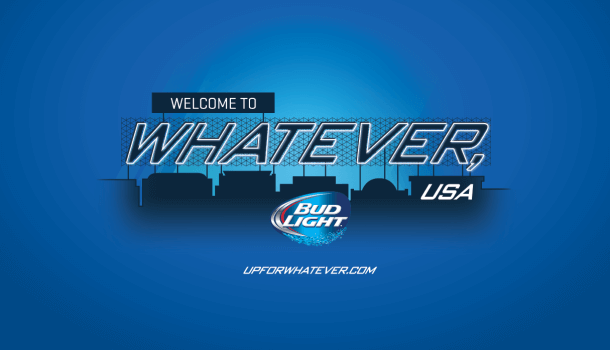If anyone can throw a good party, you know it has to be a multibillion-dollar beer company.
And that’s part of the thrill behind the Anheuser-Busch Bud Light “Up for Whatever” weekend in Crested Butte, Colorado, which took place in September.
More than 100,000 fans in the Bud Light target demographic auditioned to be invited to this 1,000-person party.
And from the branded airplanes, buses, and arrival gates to a painted main street and Bud Light-themed light poles, Anheuser-Busch pulled out all the stops to transform a small Colorado town into a millennial beer-lover’s paradise.
But while it’s clear Anheuser-Busch successfully created a Bud Light world, you might be left with two important questions:
- Does this extreme experiential marketing actually work; and
- How can it work for my brand?
Experiential Marketing for All
Despite the initial cries of legitimate small-town controversy—including commentary from former U.S. Senator Tim Wirth—this event was an overwhelming success for Anheuser-Busch.
It engaged its target market of 21- to 27-year-olds with punchy, trendy entertainment options, and it captured an arsenal of user-generated content for future promotional use.
And there’s more good news: You don’t have to throw a hot tub party turned national talent show to reap the benefits of a bold marketing move.
Here are three tips you can apply to your own brand of experiential event marketing.
1. Create an Immersive Branding Experience
Anheuser-Busch created a completely immersive experience for its fans by branding so many aspects of the event that the town was nearly unrecognizable.
The Bud Light participants saw everything from yoga and drag races to parties and ice cream.
Every element worked together to create a perfect stage for a branded Bud Light experience.
And those elements worked for a diverse target audience.
Whether your event is large or small, your marketing and branding efforts need to be just as potent.
Get creative and go for bold gestures to make sure it’s clear at all times (and in the background of all the photos and videos) that your company is the one behind all the fun.
2. Go Big or Go Home
Not many brands attempt an experiential marketing event on such a grand scale.
That being said, Anheuser-Busch wisely limited itself to 1,000 fans.
While that might not seem like a lot, it’s plenty for a small town such as Crested Butte. If the brand had tried to go even bigger in a bigger town, things could have easily gotten out of hand.
The scope and complexity of your event doesn’t have to mimic those of larger brands. What really matters is that your event numbers represent a significant percentage of participants in proportion to your company’s market.
It’s all about finding that sweet spot between too small to matter and too big to control.
3. Make it a Long-term Investment
Anheuser-Busch knew exactly what it was doing when it invested hundreds of thousands of dollars into this event.
(More than likely, the company made back that investment in its extensive content collection alone!)
Between the hundreds of thousands of fans who auditioned to attend and the 1,000 people who actually participated in the event, the company now has hours of engaging video and attractive testimonials of its key target audience displaying and praising the brand.
When you plan your experiential event, make sure you position yourself to capture content you can leverage in the future.
Have attendees sign waivers granting permission to use their likeness in future advertising promotions.
Then, spend as much of your budget as possible on capturing high-resolution images and video footage.
While having Vanilla Ice serving ice cream probably isn’t a must, to see the same results for your experiential marketing event, you do need to be mindful of proper planning and execution.
Simply focus your efforts on nailing the scope and branding of your event and the interests and values of your target market, and you’re sure to create an experiential event worth remembering.
image credit: Anheuser-Busch newsroom
